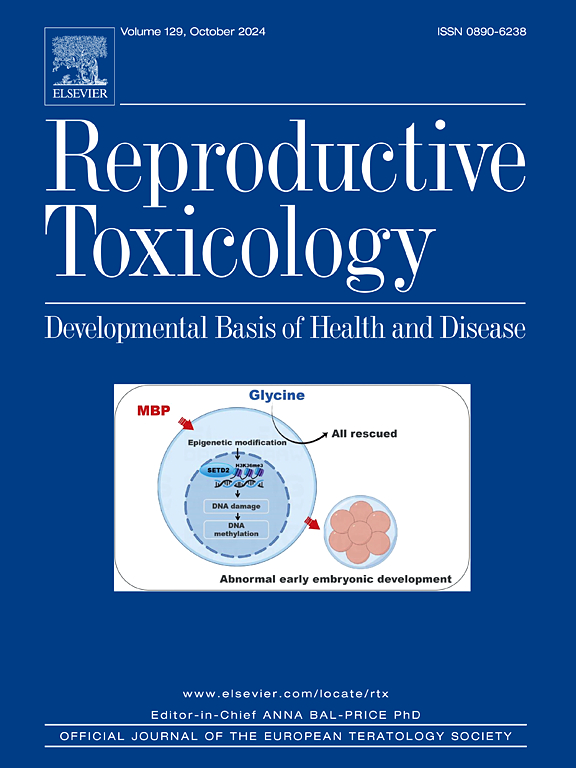Integrating network toxicology and Mendelian randomization to uncover the role of AHR in linking air pollution to male reproductive health
IF 3.3
4区 医学
Q2 REPRODUCTIVE BIOLOGY
引用次数: 0
Abstract
Background
With the rapid advancement of global industrialization and urbanization, air pollution has emerged as a major public health concern. This study investigates the molecular mechanisms linking air pollutants (APs) to male reproductive health (MRH), providing a scientific foundation for disease prevention and treatment.
Methods
APs-disease-related genes were retrieved from multiple network databases, followed by Gene Ontology (GO) and Kyoto Encyclopedia of Genes and Genomes (KEGG) enrichment analyses. A protein-protein interaction (PPI) network was constructed to elucidate potential molecular interactions. Differentially expressed genes from two external Gene Expression Omnibus (GEO) sequencing datasets were selected for validation, and intersection analysis was performed to identify key genes. Mendelian randomization (MR)was then applied to assess the causal relationships between key genes and male infertility (MIF), erectile dysfunction (ED), total testosterone levels, and testicular dysfunction. Additionally, molecular docking analysis was conducted to evaluate the binding affinity between key genes and APs.
Results
This study focused on seven common APs (Benzene, SO₂, NO, CO, NO₂, Toluene, and O₃) and two MRH conditions (ED and MIF). Through intersection analyses and external validation, Aryl Hydrocarbon Receptor (AHR) was identified as a key regulator. MR analysis suggested that AHR may contribute to MIF and ED by suppressing testosterone levels and impairing testicular function.
Conclusion
By integrating network toxicology, MR, and molecular docking analysis, this study highlights the critical role of AHR as a molecular bridge between air pollution and MRH. These findings provide novel molecular insights into the impact of Aps on MRH.
整合网络毒理学和孟德尔随机化,揭示AHR在空气污染与男性生殖健康之间的作用
随着全球工业化和城市化的快速推进,空气污染已成为一个重大的公共卫生问题。本研究旨在探讨空气污染物(APs)与男性生殖健康(MRH)的分子机制,为疾病的预防和治疗提供科学依据。方法从多个网络数据库中检索sap疾病相关基因,并进行基因本体(GO)和京都基因与基因组百科全书(KEGG)富集分析。构建了蛋白-蛋白相互作用(PPI)网络来阐明潜在的分子相互作用。从两个外部基因表达Omnibus (GEO)测序数据集中选择差异表达基因进行验证,并进行交叉分析以确定关键基因。然后应用孟德尔随机化(MR)来评估关键基因与男性不育(MIF)、勃起功能障碍(ED)、总睾酮水平和睾丸功能障碍之间的因果关系。此外,通过分子对接分析来评估关键基因与APs的结合亲和力。结果本研究重点研究了7种常见的APs(苯、SO₂、NO、CO、NO₂、甲苯和O₃)和2种MRH条件(ED和MIF)。通过交叉分析和外部验证,确定芳烃受体(Aryl Hydrocarbon Receptor, AHR)为关键调控因子。MR分析表明,AHR可能通过抑制睾酮水平和损害睾丸功能来促进MIF和ED。结论本研究通过网络毒理学、MR和分子对接分析相结合,突出了AHR作为空气污染与MRH之间的分子桥梁的重要作用。这些发现为Aps对MRH的影响提供了新的分子见解。
本文章由计算机程序翻译,如有差异,请以英文原文为准。
求助全文
约1分钟内获得全文
求助全文
来源期刊

Reproductive toxicology
生物-毒理学
CiteScore
6.50
自引率
3.00%
发文量
131
审稿时长
45 days
期刊介绍:
Drawing from a large number of disciplines, Reproductive Toxicology publishes timely, original research on the influence of chemical and physical agents on reproduction. Written by and for obstetricians, pediatricians, embryologists, teratologists, geneticists, toxicologists, andrologists, and others interested in detecting potential reproductive hazards, the journal is a forum for communication among researchers and practitioners. Articles focus on the application of in vitro, animal and clinical research to the practice of clinical medicine.
All aspects of reproduction are within the scope of Reproductive Toxicology, including the formation and maturation of male and female gametes, sexual function, the events surrounding the fusion of gametes and the development of the fertilized ovum, nourishment and transport of the conceptus within the genital tract, implantation, embryogenesis, intrauterine growth, placentation and placental function, parturition, lactation and neonatal survival. Adverse reproductive effects in males will be considered as significant as adverse effects occurring in females. To provide a balanced presentation of approaches, equal emphasis will be given to clinical and animal or in vitro work. Typical end points that will be studied by contributors include infertility, sexual dysfunction, spontaneous abortion, malformations, abnormal histogenesis, stillbirth, intrauterine growth retardation, prematurity, behavioral abnormalities, and perinatal mortality.
 求助内容:
求助内容: 应助结果提醒方式:
应助结果提醒方式:


